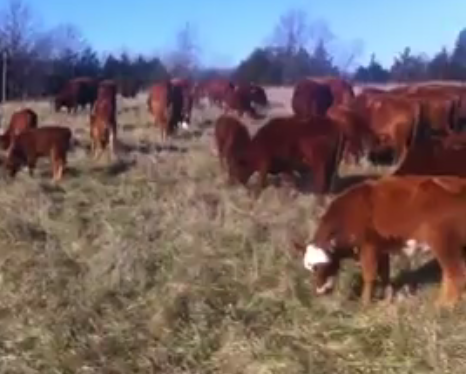From March of 2019, here’s what the Grass Whisperer says about why he keeps encouraging everyone to use a grazing chart.

It’s that time of year again, where the annoying, persistent Grass Whisperer suggests, coerces or abruptly throws it down, that folks need to use a grazing planning/monitoring tool or device. I’ve been doing show and tell on this subject for 8 years now.
Why do I keep up the reminders and offer free grazing chart templates?
Because the grazing chart works!
I believe in using the tool as an extension of my senses and observation ability. It forces me into the immersion of “what if” scenarios and managing proactively toward tangible goals. It helps me to balance feed inventory. It reduces stress on my ecosystem and me. IT MAKES ME MONEY!
This year it also has a great purpose: Grow great amounts of forage per acre so we enjoy more camping days without worry and/or staying at the lake an extra day.
What a novel concept – to actually plan more grandchildren days while optimizing animal performance and creating a healthy diverse sward!

I once again pay homage to my mentors for this grazing planning belief system. I love Jim Gerrish’s grazing planning synopsis:
“The reason for a grazing plan is because grass does not grow at the same rate every day of the year, nor does animal consumption rate stay the same. If you don’t have a plan for where you are going it is very hard to bring that supply and demand into balance.”
“Imbalance leads to inefficiency building into the rest of the system and unnecessary economical and emotional stresses for producers. To balance supply and demand grazing managers must use a variable stocking rate throughout the year (i.e. don’t have the same number of animals on the place month after month). An increase in costs and decrease in income is very often the outcome of not having a grazing plan,” says Jim.
My backstory (’cause there’s always one) is I wasn’t always the best planning and monitoring practitioner. It’s quite humbling to be out of grass by the 4th of July and scalp your resource into oblivion the rest of the summer. Back in the day, there was some testosterone-infused badge of honor to manage just using your brain and remembering everything. “I don’t need any extra paperwork to shuffle,” was the banter. That mindset was, and is today, just BS.
We’ve got to come to terms with the fact that brainpower, decision-making and observation trump the input/machinery overlords. The good news is we have an abundance of planning and monitoring tools as well as social media to help us stay connected to grazing managers around the country and learn from real examples. Just because I use a simplistic paper chart doesn’t mean I wouldn’t endorse all the web-based tools or smart-phone technologies from all sorts of well-meaning tool makers. The key is ya gotta use them!
Being the grazing chart advocate means I get to see success happen. I’ve seen grazing management formulated, applied and tracked to where real dairy farmers I know went from buying feed to having 900 baleage bales extra, simply by properly resting paddocks and keeping healthy plant residuals. The planning process allowed a beef farmer in my neighborhood to stockpile forage in the fall and saved $8000 in feed costs (or put the money directly in his pocket as income). Every season I hear of more success stories and more adoption as folks are challenged by their environment to survive or are inspired by a darn nice story. Being a little selfish, my favorite stories are the ones where the planning contributed to a family taking a much needed get away or vacation. We have to talk about these perspectives right along with production, financial and environmental outcomes. It won’t matter how great you are at grazing if you’re burned out.
Kathy and I know you are reading and contemplating the use of such grazing planning/monitoring tools. We both want to foster a management-forward agenda and detail successful implementation strategies that help all who steward our lands and feed a nation. This is just one tool that can help this mission.




